
As a guitar player, there are a number of things that you are just naturally expected to know. Some of the material covered in these pages might set you apart from other guitarists (not everyone knows about modes, for example) and make you a better player, but there are some things that you really ought to know if you want to look competent amongst other players.
One of these 'bread and butter' areas of knowledge is a good vocabulary of standard, open-position chord shapes. These are the sort of chord shapes that most people learn first when they first start playing the guitar. They are standard chord shapes, based around the open position (i.e. playing right down the bottom-end of the neck, sometimes using open strings).
Below are some chord shapes that you ought to know. You might be tempted to think "these are all folky-type chords - why should a metal guitarist like me bother learning them?". Don't be so closed-minded - any musical knowledge will broaden you as a guitarist. Also, you might be suprised how often chord shapes like these get used in the quiet passages in some heavy metal tunes.
If you're a little mysitified as to why the chords are arranged in the way that they are, then take a look at the Circle of Fifths.
As always, just learning the shapes is half the battle. You need to understand the theory side of things as well, so make sure that you're familiar with the basics of chord construction so that you understand how the chords are derived and how they relate together.
By the way, in these chord diagrams, a 'o' above the string means that the open string should be played as part of the chord. If a 'x' is marked above a string, then that string shouldn't be played at all - if necessary, mute it slightly by touching it with another finger that reaches over the top of that string.
Also, the numbers in the circles on the strings refer to the finger that should be used in each case. The numbers below the strings refer to the chord tone being played on that string.
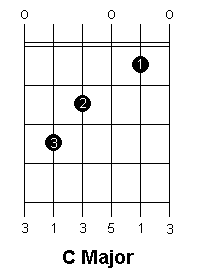
 |
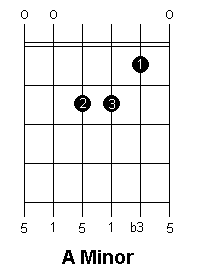 |
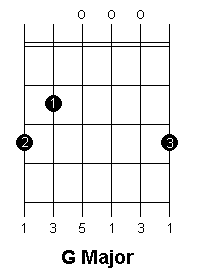
 |
 |
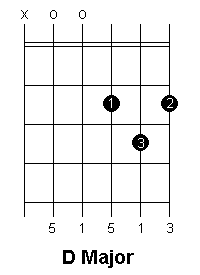 |
 |
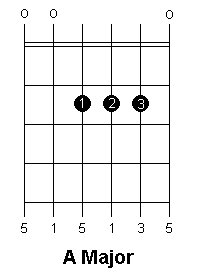 |
 |
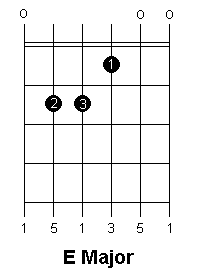 |
|
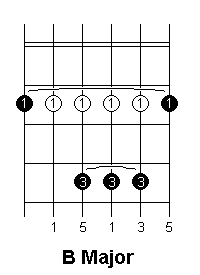 |
|
 |
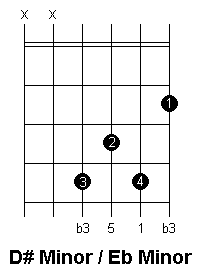 |
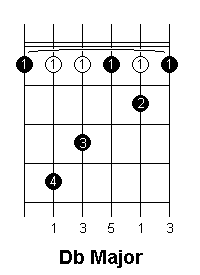 |
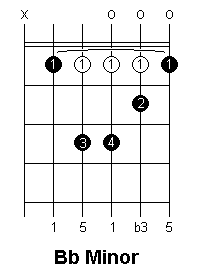 |
 |
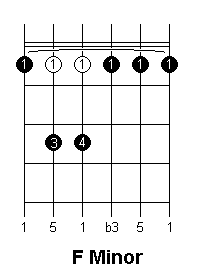 |
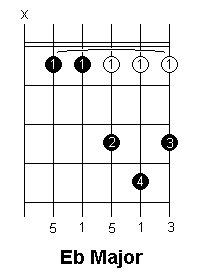 |
 |
 |
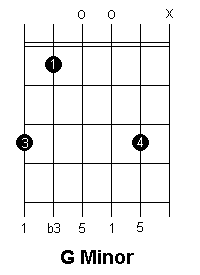
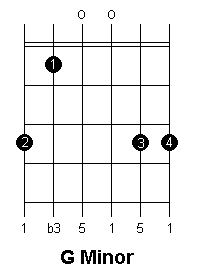 |
 |
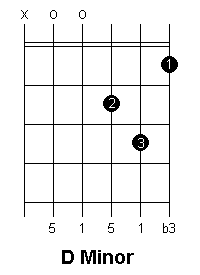
 |
Once you're comfortable with the shapes themselves, try arranging chord progressions to make use of these shapes. That will serve as useful practise in getting the changes between the different shapes right.
If you're reasonably au fait with chord theory, then you'll probably be able to come up with a few variations on these shapes. Also, it shouldn't be too difficult to work out extensions/variations for these basic shapes (such as 7th chord shapes). There'll probably be a future tutorial to provide some shapes for the latter, but there should be enough here to keep you busy in the meantime.
How useful did you find this tutorial?
| Product/Info... | PhatPhish Application | | | Product Help | | | GUPPY - PhatPhish for the web | | | About The Author |
|---|
| Get Stuff... | Download PhatPhish | | | Mechandise | | | Blank Stave And Tab Sheets | | | Tutorials |
|---|
| Do Stuff... | Register | | | Feedback | | | Links | | | Donate | | | Ask A Question |
|---|
| Social Media... | YouTube | | | | |
|---|
| Promote... | Spread The Word | | | Posters/Flyers |
|---|
| Play... | PhatPhish Picks - Boutique Plectrums |
|---|
| ©2002-2022, Dave Dixon / CyberFlotsam http://www.cyberflotsam.com |